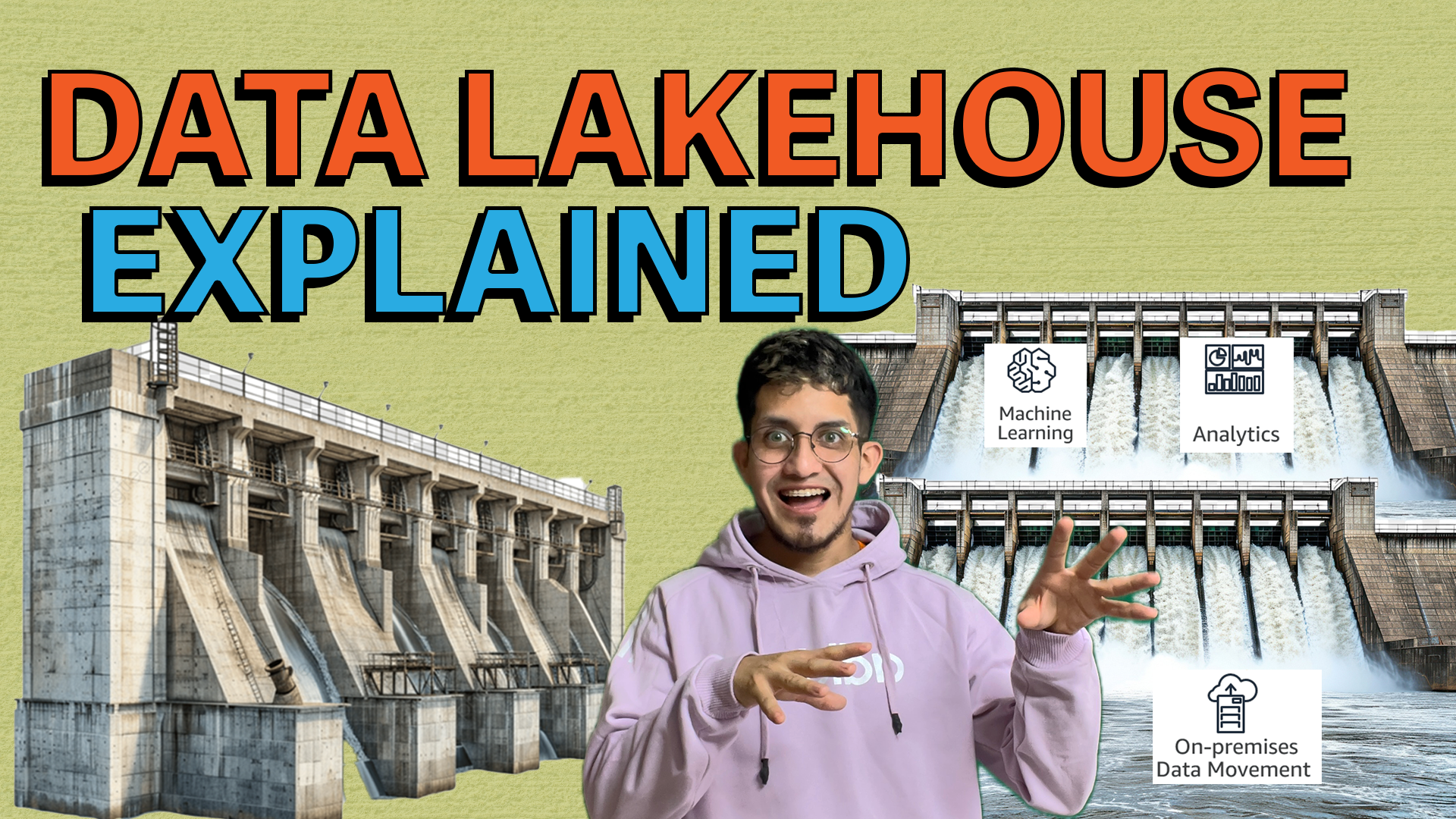Data Lakehouse 101: A Simple Guide for 12-Year-Olds!

In today’s information-driven world, organizations are drowning in data. To make sense of it and gain valuable insights, they need efficient ways to store, manage, and access information. Think of it like a massive library and archive: to make the most of all that knowledge, we need a system that’s both comprehensive and organized. This is where the concept of a data lakehouse comes in.
From Data Lakes to Data Warehouses
Traditionally, businesses have relied on two main types of data repositories: data lakes and data warehouses. Each served its purpose, but neither was perfect on its own.
Comparative Overview: Lake vs Warehouse vs Lakehouse
| Feature | Data Lake | Data Warehouse | Data Lakehouse |
|---|---|---|---|
| Data Type | Raw, unstructured, diverse | Structured, curated | Both structured & unstructured |
| Organization | Minimal | Strict, indexed | Flexible + structured |
| Cost | Low storage cost | Higher due to structured storage | Moderate; combines cost-efficiency and structure |
| Query Performance | Slow for complex queries | Fast for specific queries | Fast for analytics; balances flexibility & performance |
| Best For | Archiving all raw data | Business intelligence & reporting | Unified analytics, ML, advanced insights |
| Analogy | Archive | Cataloged library | Integrated knowledge hub |
Data Lakes: The Unprocessed Archive
Imagine a data lake as a vast, unprocessed archive. All types of raw information are deposited here – emails, videos, images, social media posts, sensor readings, and more.
- Strengths: Stores massive amounts of data cheaply and flexibly.
- Nature: Raw, unstructured, chaotic, and comprehensive.
- Analogy: Like having an enormous storage space where everything is kept without strict organization.
Data lakes excel at keeping all data types in their original form, but retrieving and analyzing data efficiently can be difficult without additional processing.
Data Warehouses: The Cataloged Library
Now, consider a data warehouse as a meticulously organized library. Here, information is curated, indexed, and structured according to rules.
- Strengths: Provides fast, reliable answers to specific queries, perfect for reporting and business intelligence.
- Nature: Structured, curated, searchable.
- Analogy: Like a library where books are labeled and organized so you can quickly find exactly what you need.
While warehouses are great for structured data and quick retrieval, they are less flexible when it comes to handling diverse or raw data types.
Data Lakehouses: The Modern Knowledge Hub
What if we could combine the best of both worlds? That’s exactly what a data lakehouse does.
Think of it as a modern knowledge hub that integrates the vastness of a data lake with the organization of a data warehouse.
- Flexibility of a lake: Store diverse data types affordably, without strict upfront processing.
- Structure of a warehouse: Apply governance, indexing, and optimization techniques for fast, reliable access.
- Analogy: A hub where raw archives meet structured libraries – everything stored, searchable, and actionable.
Benefits of Data Lakehouses
- Cost-efficient storage – store raw data cheaply like a lake.
- Fast insights – analyze structured or unstructured data efficiently.
- Advanced analytics & ML – perform machine learning and predictive modeling within the same platform.
- Improved governance – maintain compliance, auditing, and security controls.
Data lakehouses empower organizations across industries: from research and education to government and business, enabling them to gain insights from historical and real-time data simultaneously.
Why Data Lakehouses Matter
Data lakehouses are more than a technical trend – they represent a fundamental shift in how organizations handle data. By bridging the gap between lakes and warehouses, they allow companies to:
- Explore diverse data sources together
- Conduct deep, data-driven analysis
- Deliver personalized insights and services
- Operate more efficiently and make faster decisions
In short, a well-implemented data lakehouse becomes a central knowledge hub, crucial for thriving in a data-rich world.
💡 Conclusion:
A data lakehouse is like a library that also serves as an archive – storing everything, yet keeping it organized and usable. For modern businesses aiming to leverage data for growth, innovation, and competitive advantage, the lakehouse is quickly becoming the go-to architecture.